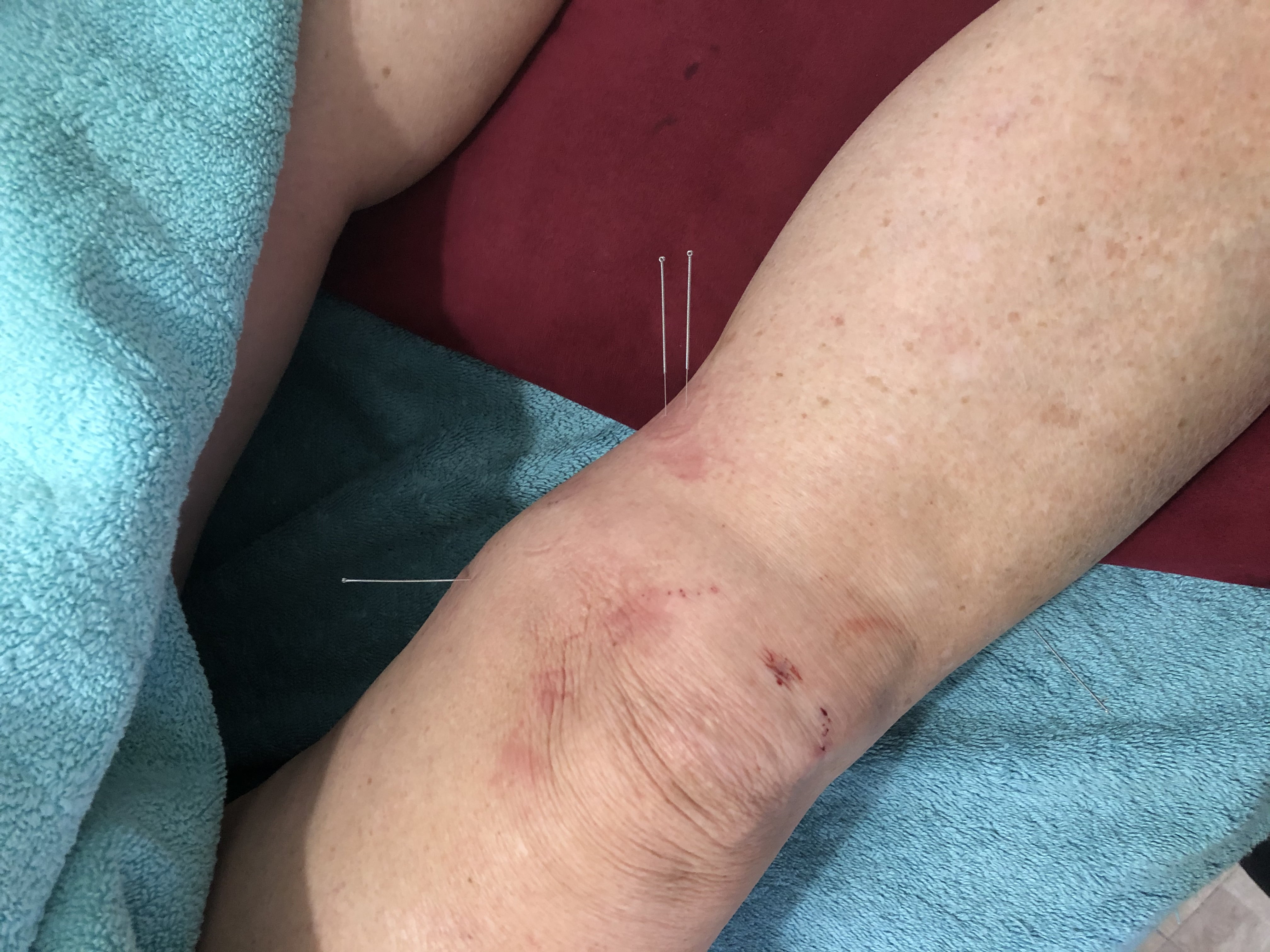
The knee joint is one of the largest joints in the body.
In my clinical practice, it is more common than medial knee pain
Knee joint pain, can’t just treat the knee joint
The human body is interrelated. If knee joint pain is considered to be a problem with the knee joint, it is incomplete. This is the reason why the cause of knee joint pain is not found and cannot be cured. If the sartorius muscle is injured and the painful location is the inside of the knee joint, the treatment of the knee joint will not be effective. The treatment point should be at the starting point of the sartorius muscle: the anterior superior iliac spine. After acupuncture directly stimulates this area, the sartorius muscle relaxes and the pain on the inside of the knee joint naturally reduces or disappears!
Because knee pain is very common, we divide it into anterior knee pain, posterior knee pain, medial knee pain, and lateral knee pain. Knee pain
1. Pain in semi-flexion of the knee joint is obvious---------------focus on patellomalacia
2. Pain when going upstairs with weight--------------------------quadriceps injury
3. Joint swelling-----------------------------degenerative arthritis of the knee joint, suprapatellar bursitis
4. Pain when going downstairs------------subpatellar fat pad strain
Pain behind the knee joint
1. Pain in going downstairs-------------hamstring injury
2. Median pain behind the knee, radiation numbness to the back of the calf----------tibial nerve injury,
3. Pain on the medial and lateral sides of the knee, knee flexion pain---------------gastrocnemius injury
4. Pain in the back of the knee, pain in knee flexion, swelling-------------suprapatellar bursitis, subpatellar fat pad inflammation
Medial knee pain (more common in 50%)
1. Iliotibial band injury-(Most doctors think it causes lateral knee joint pain, but I have observed that it can also cause medial knee pain, because as long as the anterior and lateral iliac crest is directly stimulated, it can also reduce medial knee pain. There are two The role of champion inner pain)
2. Adductor femoris injury
3. Knee medial collateral ligament injury-pain when squatting completely
4. Sartorius muscle injury-pain when kicking inside
5. Psoas Major Injury
Lateral knee pain (rare)
1. Iliotibial band injury-
2. Biceps femoris injury-a small headache in the knee and fibula
3. Knee joint lateral collateral ligament injury
A new idea for the treatment of pain in the medial knee joint-the obturator nerve is compressed and released by acupuncture
Factors of pain inside the knee joint
-Medial collateral ligament injury
-Goose foot muscles
-Obturator nerve compression
————Potectus injury (pain both inside and outside).
1. Medial collateral ligament injury often occurs in patients with X-shaped legs and flat feet. The lateral meniscus is squeezed, and the cause of pain on the medial side of the second type of knee joint is often caused by muscles, such as the injury of the inner goose foot muscle.
2. Goose foot muscle injuries mostly occur in elderly patients with O-legs. This type of patient complains of pain in the medial goose foot area, which worsens after a long walk, and the pain area is tender. The collateral ligament is stretched, and pain on the inner side of the knee joint will appear after a long time of walking.
3.
The real cause of many inner knee joint pain is that the obturator nerve is compressed in the passing area. This kind of knee joint pain often persists, and the symptoms are reduced when not bearing weight, but the treatment of surrounding muscles is often not particularly effective. The area of compression is mainly in the area of the obturator external muscle and the obturator internal muscle. So the treatment of closed cells is very important. Therefore, the pain of the medial knee joint cannot only be treated locally, and obturator nerve compression must be considered. When the patient is in the prone position, the patient’s ischial tuberosity is palpated, and the fingers slide outward along the bone surface to palpate the obturator external muscle; slide inward along the bone surface to palpate the obturator internal muscle. The treatment of this area plays a very important role in the treatment of pain on the inner side of the knee joint. Because it is the outlet of the obturator nerve, it will receive unexpected results after acupuncture is released.
In addition, you should also consider
The knee joint is composed of the femur, tibia and patella. It is the weight-bearing joint of the human body and one of the most vulnerable joints.
The knee joint is the joint with the highest morbidity in the whole body. Knee joint pain is not only related to various diseases in the joint, but also often caused by various extra-articular factors.
The symptoms of the knee joint are often not specific. Symptoms such as pain, soft legs, interlocking joints, etc., can be caused by cruciate ligament, meniscus injury, patellofemoral joint abnormality, articular cartilage disease, or even only because of abnormal hyperplasia and incarceration of synovial membrane.
Knee joint diseases mainly include: osteoarthritis, synovitis, patellar softening, meniscus injury and so on.
